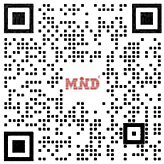The Internet of Things is an extremely broad concept and does not specifically refer to a certain technology, while RFID is a well-defined and fairly mature technology.
Even when we mention the Internet of Things technology, we must clearly see that the Internet of Things technology is by no means a specific technology,
but a collection of various technologies, including RFID technology, sensor technology, embedded system technology, and so on.
In the early days, the Internet of Things was very closely related to RFID, and it could even be said that it was built on the basis of RFID technology. In 1999, the
Massachusetts Institute of Technology established the “Auto-ID Center (Auto-ID). At this time, the understanding of the Internet of Things is mainly to break
the links between things, and the core is to build a global logistics system based on the RFID system. At the same time, RFID technology is also considered to
be one of the ten important technologies that will change the 21st century.
When the entire society entered the Internet age, the rapid development of globalization transformed the entire world. Therefore, when the Internet of Things
is proposed, people have consciously set out from the perspective of globalization, which makes the Internet of Things stand at a very high starting point from
the very beginning.
At present, RFID technology has been widely used in scenarios such as automatic identification and item logistics management, and it is one of the most important
ways of identifying items in the Internet of Things terminal. Due to the flexible data collection capabilities of RFID technology, the digital transformation work of all
walks of life is carried out more smoothly.
After entering the 21st century, RFID technology has gradually matured and has subsequently highlighted its huge commercial value. In this process, the price of tags
has also fallen along with the maturity of technology, and the conditions for large-scale RFID applications have become more mature. Whether active electronic tags,
passive electronic tags, or semi-passive electronic tags have all been developed.
With the rapid economic development, China has become the largest producer of RFID tag products, and a large number of R&D and manufacturing companies have
emerged, which has given birth to the development of industry applications and the entire ecosystem, and has established a complete industrial chain ecology. In
December 2005, the Ministry of Information Industry of China announced the establishment of a national standard working group for electronic tags, responsible for
drafting and formulating national standards for China’s RFID technology.
At present, the application of RFID technology has entered all walks of life. The most typical scenarios include shoe and clothing retail, warehousing and logistics, aviation,
books, electric transportation and so on. Different industries have put forward different requirements for RFID product performance and product form. Therefore, various
product forms such as flexible anti-metal labels, anti-counterfeiting labels, and micro-labels have emerged.
With the increasing number of Internet of Things projects, the application of RFID has become more and more extensive. However, the Internet of Things is more of a
customized market. Therefore, in the case of fierce competition in the general-purpose market, customized solutions are also a good development direction in the UHF
RFID field.
CONTACT
E-Mail: ll@mind.com.cn
Skype: vivianluotoday
Tel/whatspp:+86 182 2803 4833
Post time: Oct-25-2021







